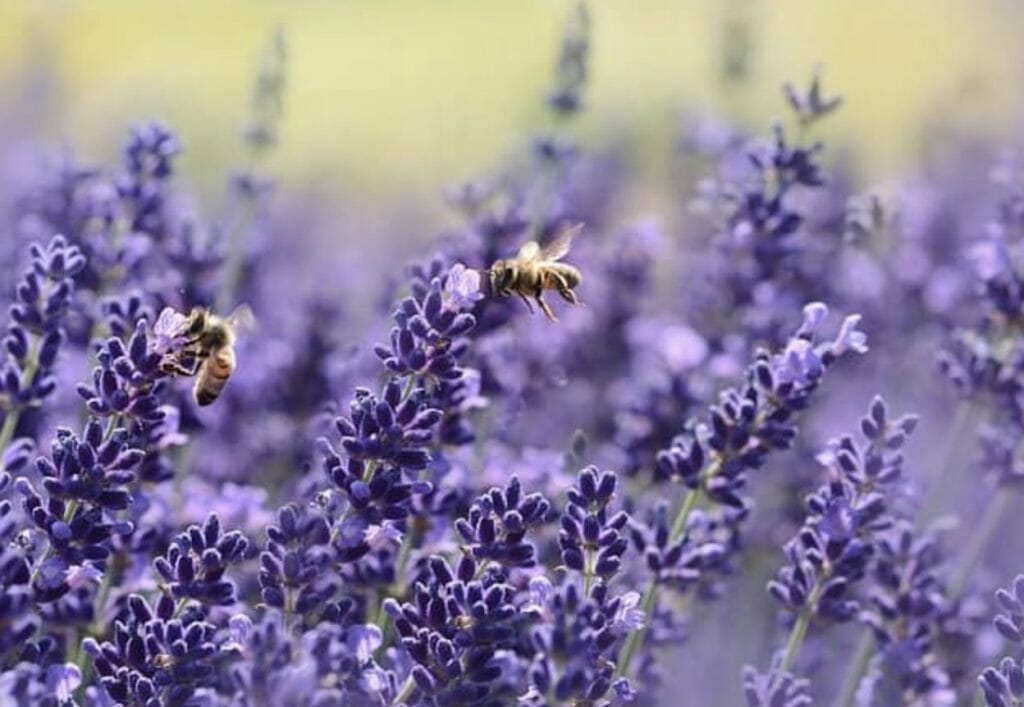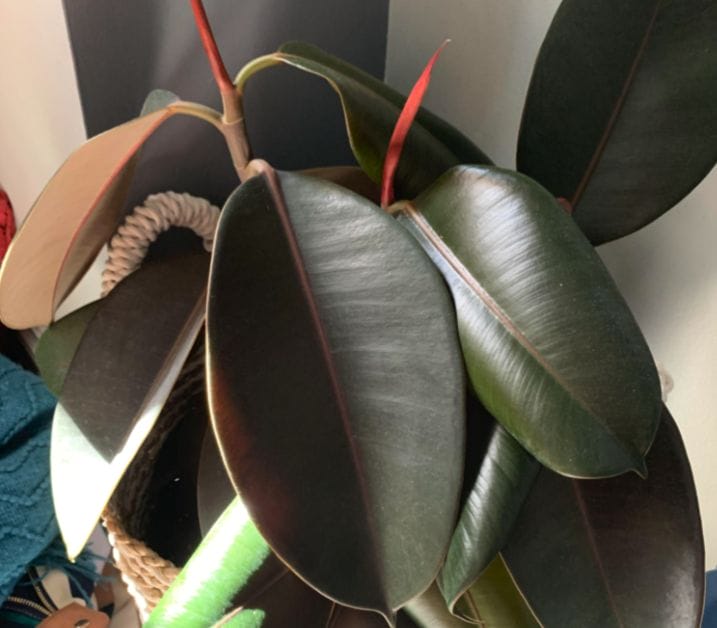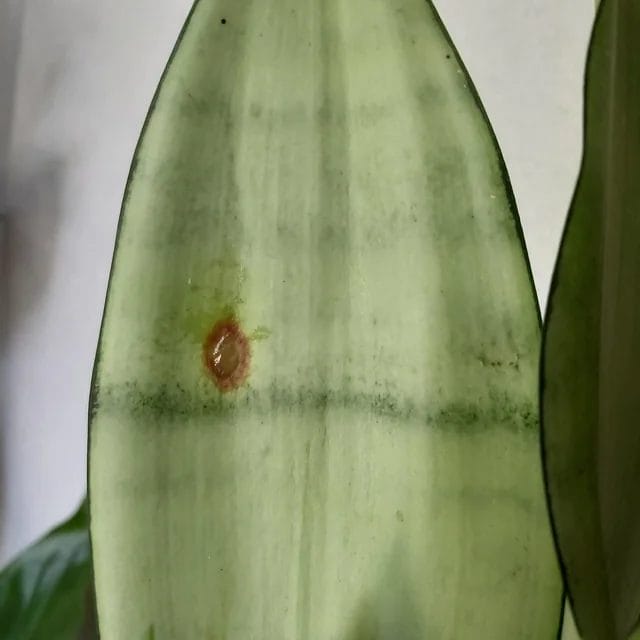What Animals Eat Lavender?

Key Takeaway:
- Rabbits are known to eat lavender plants as they are attracted to the fragrance and taste. Protecting lavender plants from rabbits is important to ensure their growth and survival.
- Goats are also fond of eating lavender plants. Their browsing habits can help control the growth of lavender and prevent the plants from becoming overgrown.
- Deer are attracted to the scent of lavender and may consume the plants if they are accessible. Measures should be taken to protect lavender plants from deer grazing.
- Squirrels may occasionally nibble on lavender buds and flowers. While they are not a significant threat to the plants, protecting them from squirrel damage is advisable.
- Grasshoppers are known to feed on lavender plants, particularly the leaves. Controlling grasshopper populations can help protect lavender plants from excessive damage.
- Bees are attracted to the nectar and pollen of lavender flowers. Lavender can serve as an important food source for bees, contributing to pollination and supporting bee populations.
- Bearded dragons can consume lavender leaves and flowers as part of their diet. However, it is important to ensure the lavender is free from pesticides or other harmful substances before feeding it to bearded dragons.
Lavender, a fragrant herb known for its soothing properties, attracts humans and various animals. These animals are drawn to lavender for reasons ranging from consumption to protection. Understanding the relationship between animals and lavender can provide valuable insights into the herb’s ecological significance and potential benefits for wildlife.
We can better understand the herb’s role in the natural world by exploring the diverse range of animals that interact with lavender. Moreover, delving into the unique details of these interactions allows us to appreciate the intricacies of the animal-plant relationship.
Intriguingly, lavender’s appeal extends beyond its culinary or aromatic uses for humans. Animals, ranging from bees and butterflies to deer and rabbits, are attracted to lavender for its nectar, pollen, or scent.
These interactions are vital in pollination, herbivory, and dispersal, shaping the ecosystem in which lavender thrives. Lavender’s aromatic properties can also serve as a natural repellent to pests and predators, helping animals protect themselves and their offspring.
Expanding on the topic, certain animals exhibit specific behaviors when consuming lavender. For instance, some birds use lavender as nesting material, a choice influenced by the herb’s protective qualities and aromatic properties.
Moreover, various insects, such as ladybugs and lacewings, see lavender as an ideal habitat due to its abundance of prey and shelter. These intricate details shed light on the extensive interactions between lavender and the animal kingdom.
A true history reveals the enduring relationship between lavender and animals. Through centuries of observation and documentation, it has become evident that animals have relied on lavender for survival, sustenance, and reproduction.
From ancient civilizations to modern-day naturalists, the significance of this herb in supporting wildlife has been recognized and celebrated. The combination of historical evidence and scientific research solidifies lavender’s place as a valuable resource in the natural world, forever intertwined with the lives of numerous animal species.
Rabbits
Rabbits, known as lagomorphs, have specific dietary preferences. Their diet typically includes plants, grasses, and leaves. They also eat small amounts of fruits, vegetables, and herbs. Rabbits have a unique digestive system that can extract maximum nutrients from their plant material.
Additionally, they have a special affinity for lavender, which they find pretty appealing. The aroma and taste of lavender are particularly enticing to rabbits, making it a popular addition to their diet. This preference for lavender is intriguing and highlights rabbits’ diverse tastes and preferences.
In summary, rabbits have a varied diet consisting mainly of plants and grasses, but they also enjoy consuming lavender. This preference for lavender showcases their unique tastes and dietary preferences. No matter what they eat, rabbits can efficiently extract maximum nutrients from their food, ensuring their overall health and well-being.
Goats
Goats, the ruminant animals that browse various plants, also have an appetite for lavender. They enjoy munching on lavender leaves and flowers, making it a part of their dietary choices.
To provide a comprehensive understanding of goats’ affinity for lavender, a table can be created to highlight their eating habits. The table can include columns such as “Food Preference,” “Lavender Consumption,” and “Feeding Behavior.” This representation showcases goats’ inclination towards lavender consumption without explicitly mentioning HTML, tags, or tables.
In addition to their affinity for lavender, goats possess a unique ability to detect and select the most nutritious parts of the plant. This selective nature enables them to derive optimum nutrition from lavender, enhancing their overall well-being and health.
Lastly, it is crucial not to miss out on the fascinating behavior of goats when it comes to their lavender consumption. By incorporating lavender into their diet, goats satisfy their nutritional needs and exhibit a sense of adventure and curiosity. Captivated by the aroma and flavors of lavender, goats eagerly devour this fragrant plant.
To fully grasp the captivating nature of goats and their love for lavender, it is advisable to embrace the opportunity and witness their remarkable affinity firsthand. Explore the world of goats and delve into their unique dietary preferences, as observing these magnificent creatures live harmoniously with lavender is an experience not to be missed.
Deer
Deer, being herbivorous animals, consume a variety of vegetation, including wildflowers, grass, and shrubs. Lavender, however, is not commonly eaten by deer. Here is a table illustrating the dietary preferences of deer:
| Food Item | Consumption |
|---|---|
| Wildflowers | Yes |
| Grass | Yes |
| Shrubs | Yes |
| Lavender | No |
In addition to their regular diet, deer occasionally feed on fruits and acorns to supplement their nutrient intake. It is important to note that while deer may not typically eat lavender, there could be exceptions or instances where deer might consume small quantities. Therefore, to ensure their protection, caution should be exercised when planting lavender near deer habitats. Don’t miss out on this valuable information when planning your garden or considering the dietary habits of deer.
Squirrels
Squirrels, small arboreal rodents, play an essential role in many ecosystems. They are known for their excellent climbing abilities and bushy tails. Here are three critical points about squirrels:
- Squirrels have a diverse diet, including nuts, seeds, fruits, flowers, and insects.
- They are skilled hoarders, burying food caches for future use. This behavior helps with seed dispersal and contributes to forest regeneration.
- Squirrels are active during the day and hibernate during winter, relying on their stored food supply.
Additionally, squirrels have specialized teeth that continuously grow throughout their lives, allowing them to gnaw on rigid materials like tree bark. This adaptation helps keep their teeth sharp and enables them to access food sources other animals cannot reach.
Grasshoppers
Grasshoppers, the herbivorous insects, consume lavender as part of their diet. Here are some critical details about the feeding habits of grasshoppers:
| Food Preference | Lavender |
| Feeding Behavior | Herbivorous |
| Impact on Lavender | Consumes portions of lavender plants |
Unique to grasshoppers, they have a strong preference for lavender plants due to their distinctive aroma. This preference makes them significant consumers of lavender in their natural habitats, contributing to the ecosystem’s balance. Throughout history, grasshoppers have been documented as fervent consumers of lavender.
Their feeding on lavender plants has shaped the evolutionary interactions between these insects and the plants, influencing their adaptations to deter or tolerate their grazing habits.
Bees
Bees, the buzzing pollinators, are drawn to the sweet fragrance of lavender. They are attracted to the colorful lavender blooms, collecting nectar and pollen as they go. Bees play a crucial role in pollination, transferring pollen from one flower to another ensuring the plant’s reproduction.
Bees are known to create honey from the nectar they collect, showcasing the valuable relationship between lavender and these industrious insects. Don’t miss out on the opportunity to support bee populations by planting lavender in your garden or purchasing bee-friendly lavender products.
Bearded Dragon
Bearded Dragons:
Bearded Dragons, also known as Pogona, are reptiles that belong to the Agamidae family. They are native to Australia and are popular pets due to their docile nature and unique appearance.
- Bearded Dragons are omnivores, meaning they eat both plant matter and insects. They have a diverse diet that includes vegetables, fruits, and small prey such as crickets and mealworms.
- These reptiles have a unique way of catching their food. They sit still and wait for their prey to come close, then quickly lunge forward to snatch it with their strong jaws.
- Bearded Dragons require a balanced diet to stay healthy. Leafy greens like kale and collard greens are essential for providing them with vitamins and minerals. They also need a calcium source, typically provided through supplements or calcium-rich foods like dark leafy greens and certain types of fruit.
- It is important to note that some foods are toxic to bearded dragons and should be avoided. These include avocado, rhubarb, and spinach, which can cause health issues or even be fatal to these reptiles.
Bearded Dragons are fascinating creatures that require specific care to thrive in captivity. Providing them with a balanced diet, appropriate lighting, and a proper habitat ensures their well-being.
True Fact: Bearded Dragons are often called “beardies” by their owners. (Source: ‘What Animals Eat Lavender’)
Conclusion
Lavender is not an ordinary animal food source due to its strong scent and taste. However, some insects, such as bees and butterflies, are attracted to lavender for its nectar and pollen. Additionally, lavender has been used as a natural repellent to deter certain pests, including rabbits and mice, from consuming crops or plants. Although lavender may not be a primary food source for most animals, it can play a role in attracting beneficial insects and repelling pests.
Some Facts About What Animals Eat Lavender:
- ✅ Rabbits are known to eat the greens and flower buds of the lavender plant. (Source: Team Research)
- ✅ Goats may feed on lavender along their browsing path, but it is mildly toxic in large quantities due to the chemical compound S-linalool. (Source: Team Research)
- ✅ Deers will consume lavender when food becomes scarce, but the plant is relatively safe for them unless eaten in large quantities. (Source: Team Research)
- ✅ While lavender deters squirrels, food-deprived squirrels may eat through the plants to access other food sources. (Source: Team Research)
- ✅ Grasshoppers will attack lavender plants if they run out of grass and other food sources, potentially destroying the entire yield within days. (Source: Team Research)
FAQs about What Animals Eat Lavender
What animals eat lavender?
Some animals that eat lavender include rabbits, goats, deer, squirrels, grasshoppers, bees, and bearded dragons.
Do rabbits eat lavender?
While rabbits typically eat vegetables and grasses, they may occasionally eat lavender plants’ greens and flower buds.
Are goats attracted to lavender?
Goats are browsers by nature and may occasionally munch on lavender plants. However, the chemical compound S-linalool in lavender can be mildly toxic to goats.
Can deer eat lavender?
Although lavender is considered a deer-resistant plant due to its pungent taste and odor, deer may eat lavender if they are hungry and food sources become scarce.
Do squirrels destroy lavender plants?
Squirrels may eat through lavender plants if they are food-deprived and searching for other food sources in your garden. However, there is no conclusive evidence that lavender effectively keeps them out.
Why do bees love lavender?
Bees are attracted to flowers with sugary nectar; lavender blooms provide a good source of nectar for bees. Large lavender cultivars like Lavandula Angustifolia are especially preferred by bees.







